We may receive a commission when you use our affiliate links. However, this does not impact our recommendations.
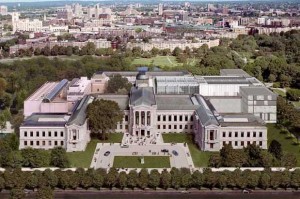 I got a request recently in the comments section of my “Design in Practice:Stylin’ Too” post (read it here) about museums to visit for those interested in period furniture from Boston to Williamsburg. There’s a bunch, but I’ll list some of my favorites. Of course, by limiting my northern exposure to Boston, you’re forcing me to leave out some of the treasures in Vermont (The Shelburne Museum, which not only has a collection of period furniture and buildings but an amazing hand tool collection…and a steam boat) and New Hampshire (The Currier Museum of Art in Manchester has a great collection of Dunlap furniture and Strawberry Banke in Portsmouth has a very eclectic mix).
I got a request recently in the comments section of my “Design in Practice:Stylin’ Too” post (read it here) about museums to visit for those interested in period furniture from Boston to Williamsburg. There’s a bunch, but I’ll list some of my favorites. Of course, by limiting my northern exposure to Boston, you’re forcing me to leave out some of the treasures in Vermont (The Shelburne Museum, which not only has a collection of period furniture and buildings but an amazing hand tool collection…and a steam boat) and New Hampshire (The Currier Museum of Art in Manchester has a great collection of Dunlap furniture and Strawberry Banke in Portsmouth has a very eclectic mix).
Starting in the north and working my way south (and in no particular order), my first submission is the Museum of Fine Arts Boston (affectionately known as the MFA). Maxim and Martha Karolik consulted with the curators at the MFA to learn more about American decorative and fine arts. Once bitten by bug, they collected extremely fine examples of period furnishings, silver, textiles and art from all of the colonies – then they donated it to the MFA. When combined with the rest of the MFA’s collection of period furniture, you’ve got the makings of one of the best collections in the world.
Plimoth Plantation is another of my favorites and is easily combined with a trip to Boston. They’ve got some period furniture plus a whole bunch of stuff my friend Peter Follansbee has made.
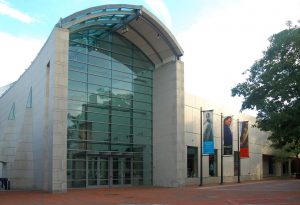 If you head over to Salem, Massachusetts (an extremely cool town) drop in and see the Peabody Essex Museum for a look at some great furniture. They’ve got some very early stuff but they also have some great Federal furniture – Samuel McIntire worked in the town.
If you head over to Salem, Massachusetts (an extremely cool town) drop in and see the Peabody Essex Museum for a look at some great furniture. They’ve got some very early stuff but they also have some great Federal furniture – Samuel McIntire worked in the town.
Another great Massachusetts destination is Historic Deefield. It’s an entire town where you’ll be able to see furniture in house settings (only certain homes in the town are part of the museum – I don’t want to be responsible for people knocking on the doors of private homes) as well as in galleries. And while you’re there, make sure to drop in on the Memorial Hall Museum for a look at some early Connecticut river valley pieces.
And speaking of Connecticut, you might want to check out the Wadsworth Atheneum. They not only have some great Eliphalet Chapin pieces but a good part of the Wallace Nutting collection. While you’re there, pop on over to the Connecticut Historical Society for more Connecticut furniture.
Once you’re finished in the Hartford area, head south to New Haven and check out the Yale University Art Gallery. You might not automatically think a university would have a great collection of furniture but Yale has the Garvan collection plus an amazing study collection (that’s a code word for fakes).
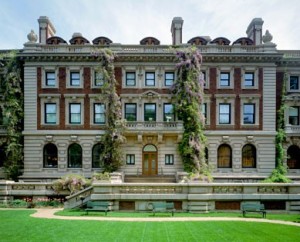 Over in Albany, New York you might find the Albany Institute worth a visit before you head south to Manhattan. The Metropolitan Museum of Art (MET) is one you do not want to miss. Their collection of period furniture and room settings is unrivaled except for Winterthur, but we’ll get to that shortly. While in Manhattan make sure to trek over to the Cooper-Hewitt Museum (currently close for renovation but it should re-open a little later in 2014). If you want to head out of the city, a short nine mile jaunt from the doors of the MET is the Brooklyn Museum. It has a broad collection of furniture but also has a bunch of period rooms.
Over in Albany, New York you might find the Albany Institute worth a visit before you head south to Manhattan. The Metropolitan Museum of Art (MET) is one you do not want to miss. Their collection of period furniture and room settings is unrivaled except for Winterthur, but we’ll get to that shortly. While in Manhattan make sure to trek over to the Cooper-Hewitt Museum (currently close for renovation but it should re-open a little later in 2014). If you want to head out of the city, a short nine mile jaunt from the doors of the MET is the Brooklyn Museum. It has a broad collection of furniture but also has a bunch of period rooms.
In the little town of Freehold, New Jersey you’ll find an oft overlooked museum filled with rare and exquisite examples of period furniture – The Monmouth County Historical Association. In addition to the main museum they have five historic homes that are worth a look. Further south and west is the Historical Society of Haddonfield. Before leaving New Jersey, be sure to check out the William Trent house in Trenton.
If you want to deviate from period furniture a bit, make sure to check out The Mercer Museum in Doylestown, PA (for more you can read about the museum in the February issue #209). There’s lots of woodworking and other tools and implements. But, if you want to stick with period furniture and room settings, make sure to check out the Philadelphia Museum of Art (PMA). They have also supplied furnishings for some of the historic homes in Fairmount Park, which you can tour (for more info check out the Fairmount Park Historic Trust or this post…Cedar Grove is my favorite house in the park). While in Pennsylvania, be sure to travel a bit west of Philadelphia and check out the Chester County Historical Society in West Chester, Pa for the largest collection of spice boxes I’ve ever seen (and there’s a “small” collection of tall case clocks too).
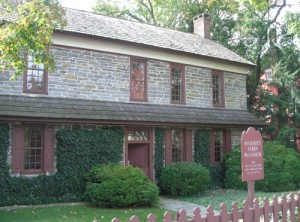 If you want to trek a little further west, be sure to hit the Landis Valley Museum in Lancaster, PA. And still further west in the little town of Columbia, PA you’ll find two gems. The National Clock And Watch Museum and the Wright’s Ferry Mansion (probably my favorite historic house behind the Wythe house in Colonial Williamsburg).
If you want to trek a little further west, be sure to hit the Landis Valley Museum in Lancaster, PA. And still further west in the little town of Columbia, PA you’ll find two gems. The National Clock And Watch Museum and the Wright’s Ferry Mansion (probably my favorite historic house behind the Wythe house in Colonial Williamsburg).
If you head back east, just below Wilmington, Delaware is the big dog of period furniture museums – Winterthur. With over 100,000 objects in 175 rooms, you could spend years touring the place and not see it all (I know – I’ve tried). Make reservations ahead of time and go on a private tour. It’s worth the extra cost to get behind the velvet ropes.
In Maryland you have to check out the Baltimore Museum of Art‘s collection. And if you’re not overloaded on the local furniture, be sure to check out the Maryland Historical Society. Both places are in Baltimore and can easily be done in a long day.
In Washington, DC and the surrounding area, I’d be sure to drop in on the State Department and get a tour of the Diplomatic Reception Rooms (make sure you register for the tour ahead of time). If you have any doubt about the grandeur of our country, a tour of these rooms will certainly put that to rest. Most folks think of the Smithsonian American Art Museum when they think DC period furniture (and they wouldn’t be wrong) but, the Diplomatic Reception Rooms are far less frequented and much more densely packed with the stuff. And don’t forget Mount Vernon while you’re in the area. Seeing George Washington’s home is a treat for any period furniture nut.
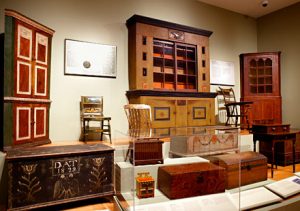 And finally, if you head to Williamsburg, make sure to check out the DeWitt Wallace Decorative Arts Museum. It’s a great way to spend the day and has some of my favorite pieces in Colonial Williamsburg on display. Be sure to also stop by the Abby Aldrich Rockefeller Folk Art Museum for a look at some of great paint decorated pieces.
And finally, if you head to Williamsburg, make sure to check out the DeWitt Wallace Decorative Arts Museum. It’s a great way to spend the day and has some of my favorite pieces in Colonial Williamsburg on display. Be sure to also stop by the Abby Aldrich Rockefeller Folk Art Museum for a look at some of great paint decorated pieces.
There’s lots of other places to see but these are a few of my favorites. I always try to find smaller, less frequented museums in whatever area I am currently traveling (like checking out Washington’s Headquarters in Morristown, NJ for example). You usually get to see things the big museums overlook or just don’t have space to display and they’re usually more enthusiastic about woodworkers visiting.
The geographic focus of this post has limited the choices so I may try to do a few more that give you ideas for different areas of the country. And if you’re reading this and you’ve been someplace I haven’t mentioned that you like, make sure to put it in the comments. I’m always looking for new places to explore.
Here are some supplies and tools we find essential in our everyday work around the shop. We may receive a commission from sales referred by our links; however, we have carefully selected these products for their usefulness and quality.








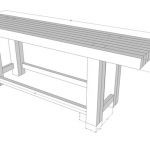
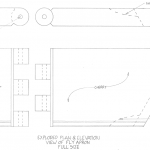
Wonderful tour, Chuck. Many thanks. At this point, I am not interested in creating period pieces, but am very interested in learning how to see. Both details and overall presentation. For those seeking more information and photos I’d highly recommend Jeffrey P. Greene’s AMERICAN FURNITURE OF THE 18th CENTURY by Tauton Press. A friend bought me a copy when the UCSB Library was culling their herd prior to major expansion/rehab of the facility. Cost $1 cash, excellent condition. Cool.
First third of the book covers 18th century works as well as precursor styles and a look to future movements. Remainder of the book offers many skill development type information lush with photos and illustrations including exploded drawings of some key pieces discussed earlier. My library is not extensive so I am not able to compare it to other works, but I’d state that it is an awesome resource.
I look forward to other blog posts on design and development. Thank you so much,
Tom
You should add Sturbridge Village, located along a direct route between Boston, MA and Hartford, CT (about half-way between.)
Maybe not quite historic is the Wharton Esherick Museum in Valley Forge Pa and Nakishima In New Hope, Pa.
I wonder how many woodworkers have made the trip to Colonial Williamsburg and seen the village, gone through the woodworking, and carpentry shops, gunsmith, and toured everything in the village. But didn’t know that open green was the roof of both the mentioned museums. We went knowing they were there, but once there had to ask a lot of questions to sort out exactly where.
For anyone who finds this to be a problem, ask where the insane asylum is sited. I’ve heard it said more than once, you have to be a little crazy to appreciate woodworking.